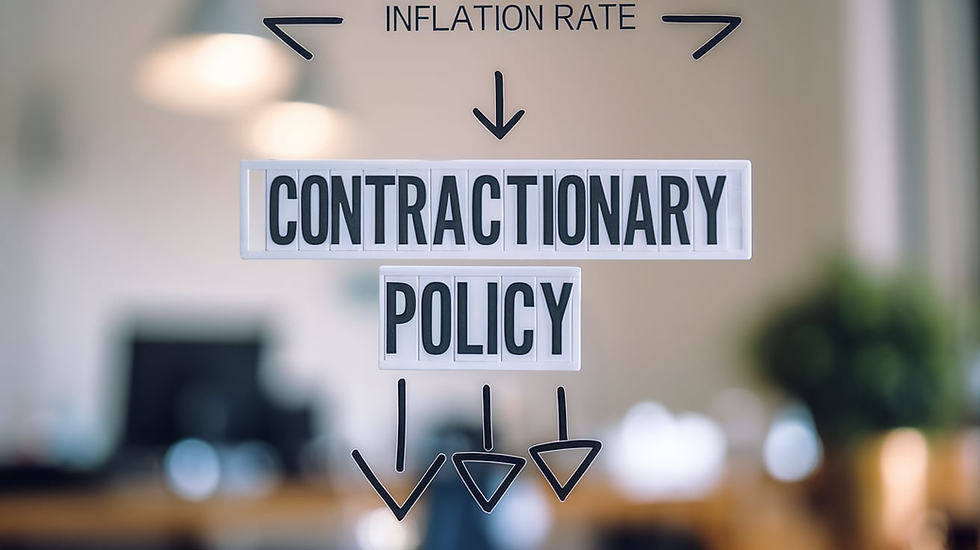Policyholder Surplus: Meaning, Importance, and Insights
- Sofia Müller

- Sep 1
- 5 min read
When you think about insurance companies, it is easy to focus only on the premiums you pay and the claims they cover. But behind the scenes, insurers must keep enough financial strength to stay reliable for decades. One of the key measures of this strength is policyholder surplus.
This figure shows how much an insurance company owns above what it owes. In simple words, it is the cushion that protects you and every other policyholder if many claims come in at once. Without this surplus, insurers may struggle to pay, especially during natural disasters, economic downturns, or unexpected large claims.
In this article, we will explore what policyholder surplus means, why it matters for you as a policyholder, how regulators use it, and what it tells you about the safety of your insurance company.

What is Policyholder Surplus?
Policyholder surplus is the difference between an insurer’s total assets and its total liabilities. Assets include investments, cash, and property the company owns. Liabilities are future claims and obligations that the insurer must pay.
If assets are greater than liabilities, the extra portion is the policyholder surplus.
If liabilities are higher than assets, the company is financially weak.
Think of it like your personal savings account. If you earn more than you spend, you have money left over as a cushion. For an insurance company, this cushion is the surplus. It ensures that even if claims rise suddenly, the company has the financial strength to handle them without defaulting.
Why Policyholder Surplus Matters to You
The main reason policyholder surplus is important is because it protects your claims. You buy insurance to feel safe, not to worry about whether the company can pay. Surplus plays a big role in that trust.
A strong surplus means the insurer can survive disasters or recessions.
It shows long-term stability and reduces the chance of failure.
Regulators and rating agencies use surplus as a measure of financial health.
For example, if a hurricane hits and thousands of claims arrive, the insurer uses its surplus to pay everyone without delay. Without surplus, some policyholders could face slow payments or even lose coverage if the company goes bankrupt.
How Policyholder Surplus is Calculated
The formula for policyholder surplus is straightforward:
Policyholder Surplus = Total Assets – Total Liabilities
Assets: Bonds, stocks, real estate, reserves, and cash.
Liabilities: Claim reserves, debts, unpaid claims, and future obligations.
For instance, if an insurer has $500 million in assets and $400 million in liabilities, the surplus is $100 million. This $100 million acts as a safety buffer. Insurers often grow this surplus by investing carefully and managing risks.
Role of Regulators and Solvency Rules
Insurance companies are regulated by state and national authorities. Regulators closely track policyholder surplus to make sure insurers remain solvent. They do this by setting solvency ratios, which compare surplus to premiums written or claims expected.
A healthy ratio shows the company can handle risks.
A weak ratio may lead regulators to restrict the insurer’s operations.
In some cases, regulators can take over failing insurers to protect policyholders.
This is why surplus is not just an accounting figure. It is central to consumer protection and the entire insurance system’s stability.
Policyholder Surplus vs. Capital and Reserves
Many people confuse surplus with capital or reserves, but they are not the same.
Capital is the money invested by shareholders or owners.
Reserves are funds set aside to cover expected claims.
Surplus is what remains after liabilities are deducted from assets.
Together, these parts make up the insurer’s financial base. But surplus is unique because it represents extra strength beyond daily operations. It is a sign of how much cushion the company has left after meeting obligations.
Why Insurers Must Grow Surplus
Insurers must constantly grow their surplus as they expand their business. If they write more policies without building surplus, their risk exposure increases. This could threaten their financial stability.
Ways insurers grow surplus include:
Retaining earnings instead of paying them all as dividends.
Making safe investments for long-term returns.
Limiting risky underwriting practices.
For policyholders, a growing surplus is a good sign. It shows the insurer is managing risk responsibly while still providing protection.
Impact of Policyholder Surplus on Insurance Costs
You may wonder if surplus affects your premiums. The answer is indirectly, yes.
A company with strong surplus can take on more risk, which may keep premiums stable.
A company with weak surplus may raise premiums to strengthen its finances.
Surplus also impacts the insurer’s ability to offer new products and services.
So while you do not see surplus listed on your bill, it still shapes what you pay and the coverage options you get.
Conclusion
Policyholder surplus is more than an accounting term. It is the financial backbone of your insurance company. It shows whether the insurer has enough strength to pay your claims even in the worst situations. Regulators, rating agencies, and investors watch surplus closely because it reflects the company’s true stability. For you as a policyholder, a healthy surplus means peace of mind. The next time you choose an insurance provider, take a moment to check their surplus and financial ratings. It could make all the difference when you need your coverage most.
FAQs
What does policyholder surplus mean in insurance?
Policyholder surplus is the extra financial cushion an insurance company has after subtracting liabilities from its assets. It shows how much the insurer owns beyond what it owes. A strong surplus means the company is financially healthy and can pay claims even in tough situations like natural disasters or market downturns.
How is policyholder surplus different from reserves?
Reserves are funds set aside to cover expected claims and obligations, while policyholder surplus is the amount left after liabilities are deducted from total assets. Surplus reflects overall financial strength, whereas reserves are earmarked for specific future payments. Both are important, but surplus provides an additional safety net for policyholders.
Why is policyholder surplus important for consumers?
Policyholder surplus ensures that your insurer can pay claims without delay, even during unexpected crises. It protects you from the risk of the company failing or going bankrupt. A strong surplus signals stability, trust, and long-term reliability. This means your coverage remains safe when you need it most, which is the main reason you buy insurance.
How do regulators use policyholder surplus?
Regulators track policyholder surplus to confirm that insurers remain solvent and safe for consumers. They set solvency ratios to measure if the company has enough surplus compared to its risks and premiums. If surplus falls too low, regulators may limit operations, require corrections, or step in to protect policyholders from financial loss.
Does policyholder surplus affect premiums?
Yes, indirectly. A company with a strong surplus can spread risks and keep premiums more stable. On the other hand, a company with a weaker surplus may raise premiums to strengthen its financial position. While surplus is not shown on your bill, it influences the cost, stability, and availability of insurance coverage.



Comments